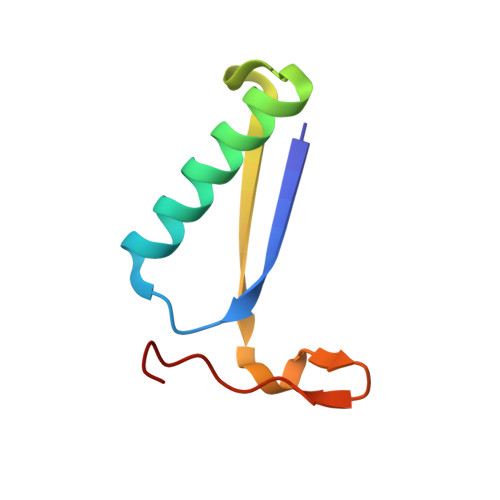Kinetic and Structural Analysis of Two Linkers in the Tautomerase Superfamily: Analysis and Implications.
Baas, B.J., Medellin, B.P., LeVieux, J.A., Erwin, K., Lancaster, E.B., Johnson Jr., W.H., Kaoud, T.S., Moreno, R.Y., de Ruijter, M., Babbitt, P.C., Zhang, Y.J., Whitman, C.P.(2021) Biochemistry 60: 1776-1786
- PubMed: 34019384
- DOI: https://doi.org/10.1021/acs.biochem.1c00220
- Primary Citation of Related Structures:
7M58, 7M59 - PubMed Abstract:
The tautomerase superfamily (TSF) is a collection of enzymes and proteins that share a simple β-α-β structural scaffold. Most members are constructed from a single-core β-α-β motif or two consecutively fused β-α-β motifs in which the N-terminal proline (Pro-1) plays a key and unusual role as a catalytic residue. The cumulative evidence suggests that a gene fusion event took place in the evolution of the TSF followed by duplication (of the newly fused gene) to result in the diversification of activity that is seen today. Analysis of the sequence similarity network (SSN) for the TSF identified several linking proteins ("linkers") whose similarity links subgroups of these contemporary proteins that might hold clues about structure-function relationship changes accompanying the emergence of new activities. A previously uncharacterized pair of linkers (designated N1 and N2) was identified in the SSN that connected the 4-oxalocrotonate tautomerase (4-OT) and cis -3-chloroacrylic acid dehalogenase ( cis -CaaD) subgroups. N1, in the cis -CaaD subgroup, has the full complement of active site residues for cis -CaaD activity, whereas N2, in the 4-OT subgroup, lacks a key arginine (Arg-39) for canonical 4-OT activity. Kinetic characterization and nuclear magnetic resonance analysis show that N1 has activities observed for other characterized members of the cis -CaaD subgroup with varying degrees of efficiencies. N2 is a modest 4-OT but shows enhanced hydratase activity using allene and acetylene compounds, which might be due to the presence of Arg-8 along with Arg-11. Crystallographic analysis provides a structural context for these observations.
















